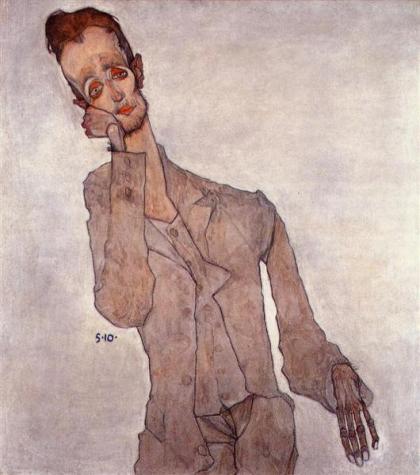Hidden Genius
Orson Welles was a flamboyant showman: Andrew Sarris observed that “Every Welles film is designed around the massive presence of the artist as autobiographer…The Wellesian cinema is the cinema of magic and marvels, and everything, especially its prime protagonist, is larger than life.” At 26, the conceptual Welles made his first movie – a deliberately revolutionary masterpiece, filled with conspicuous technical innovations. Citizen Kane ranked first, as the best movie ever made, in each of the five decennial polls of film critics made by Sight & Sound from 1962 through 2002.
In contrast, in 1968 Sarris observed that although Alfred Hitchcock was “the supreme technician of the American cinema,” the subtlety of his technique often caused it to be overlooked: “most American reviewers have failed to appreciate the Hitchcockian virtues of vividness and speed as artistic merits.” Hitchcock's goal was to administer what he called cinematic shock therapy – “getting the audience on the edge of their seats” by creating suspense. This required involvement: he wanted his audience to be participants, rather than merely spectators. Achieving this required the director’s technique to disappear: “the work of good technique is that it is unnoticed.” For much of his long career, Hitchcock was widely regarded as a commercially successful director whose work lacked artistic merit. This perception began to change in the 1950s, with the campaign of a group of young French critics who later became important directors. These sophisticated viewers considered Hitchcock a technical genius. In 1962, Francois Truffaut traveled to Hollywood and recorded 50 hours of interviews with Hitchcock that he published as a book. Truffaut regarded Hitchcock's films as a textbook for directors: “In Hitchcock's work a filmmaker is bound to find the answer to many of his own problems, including the most fundamental question of all: how to express yourself by purely visual means.”
 Alfred Hitchcock
Alfred HitchcockHitchcock's case was not unique. Many experimental artists work long and hard to find new ways to express their perception of the world around them, and often wish to do this as simply as possible, to subordinate form to content. These artists seek to make an art that appears natural rather than artificial. And it is those who come closest to this goal, who succeed the most completely at creating art that conceals art, who are most likely to be undervalued.
Other examples abound. In 1877, when 36-year-old Auguste Rodin made his public debut by exhibiting The Age of Bronze, the statue was considered so lifelike that he was accused of casting it from life. Rodin’s avowed goal was to make sculpture “a close study of nature,” and he was both wounded and infuriated by this charge of dishonesty. A biographer explained that the critics’ difficulties with Rodin’s sculpture “stemmed from their inability to recognize a new style in which naturalism played a stronger role than the traditional symbolic propensities of sculpture” - in short, their judgment of an experimental work by conceptual criteria. But Rodin persevered, and succeeded in reviving the art of sculpture. His powerful new style achieved his goal of making style disappear: “There is no good style except that which makes itself forgotten in order to concentrate all of the attention of the viewer on the subject.”

Throughout his career, Robert Frost chafed at the widespread critical opinion that “my simplicity is that of the untutored child.” In 1922, T.S. Eliot casually dismissed Frost as a poet of “New England torpor.” Stung by Eliot's condescension, Frost responded that “the need of being versed in country things was far greater, and often harder to achieve, than the need of being versed in pseudo-intellectual myths and symbols.” But Frost would suffer for decades from the general perception of critics and scholars: “Eliot is the poet of complexity and allusion, whose work is bound up with the whole history of literature itself; Frost is the poet of simplicity and directness, who writes of apple trees and stone walls and leaf-covered roads.” Matthew Bolton observed that Frost in fact “mastered an art that concealed art,” and explained why his achievement has so often been overlooked: “The immediacy of Frost’s rhymes, rhythms, and images can lull a reader into thinking that Frost’s verse is somehow easier to write and to apprehend than the work of a ‘difficult’ poet such as Eliot…The simplicity of Frost’s work can lead some readers to adopt simplistic readings of his poems.”

Robert Frost, 1959. Image courtesy Wikimedia Commons.
I have discussed Hitchcock, Rodin, Frost and other examples of hidden genius in a recent paper. These artists are linked by their experimental goals and methods. The technical mastery that makes art disappear has generally been the product of the late work of great experimental innovators. Rembrandt is a prime example. Scholars agree that he was greatest in old age, but struggle to articulate the subtle developments that allowed him to transcend the limits of his discipline. Ernst van de Wetering concluded that Rembrandt’s ability to create the sublime effects of his late works depended on “professional skill that can only be built up through endless practice from an early age on.”

Scholars of creativity have too often been beguiled and blinded by the spectacular pyrotechnics of brash young geniuses: Rimbaud, Jarry, Picasso, Welles, Godard, Plath, and Dylan trumpeted their early triumphs for all to see and hear. In contrast, the contributions of experimental old masters often arrive gradually and unobtrusively, late in their lives. And ironically, the very nature of their goals and methods often adds to their failure to gain critical recognition. As seen in the examples of Hitchcock, Rodin, and Frost, there has often been far from universal appreciation that great creativity can be the product of skill born of endless practice. The sensational innovations of conceptual young geniuses are more readily noticed, but scholars who seek to understand the true relationship between age and creativity must look beyond the obvious, recognizing that important innovations need not be blatant but can be subtle and unobtrusive. Only then can we correct the error of the longstanding belief that creativity is greatest in youth.
SSRN Link: https://papers.ssrn.com/sol3/papers.cfm?abstract_id=3110155



















